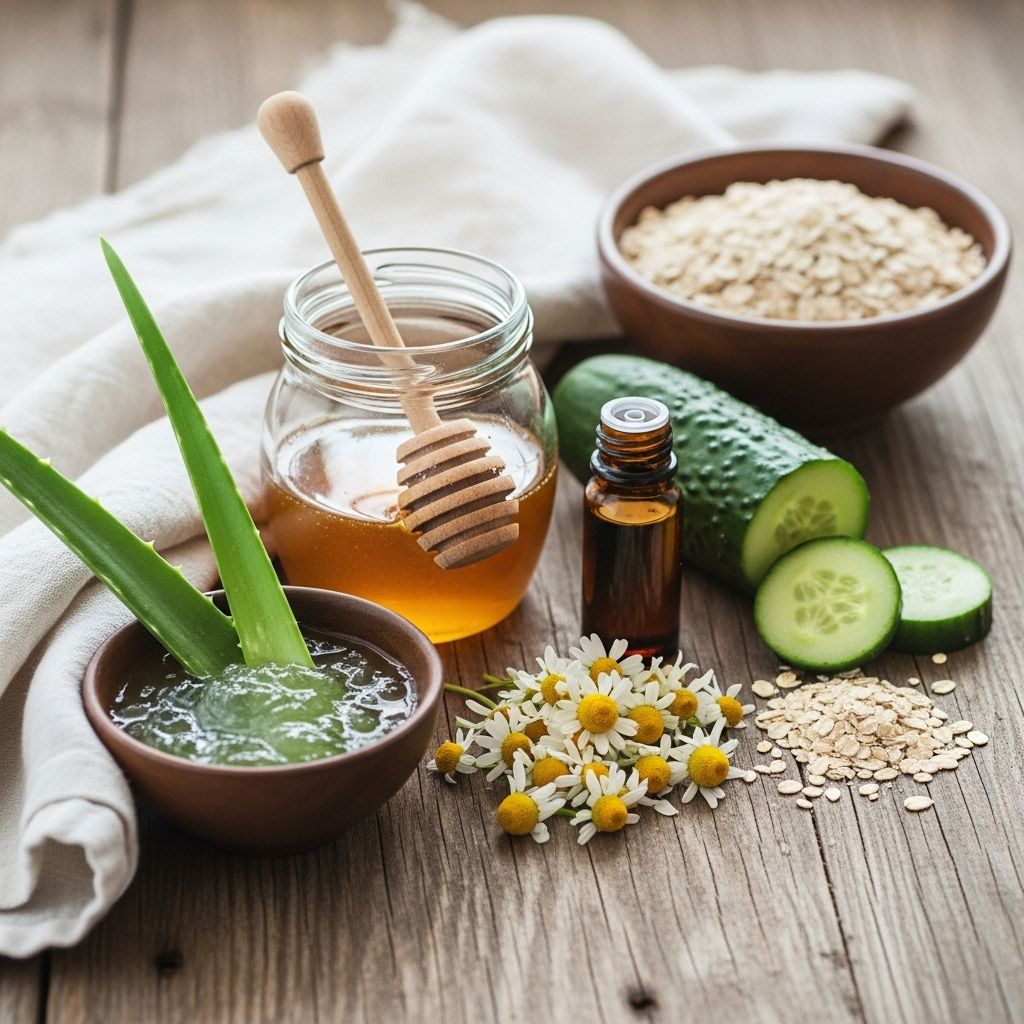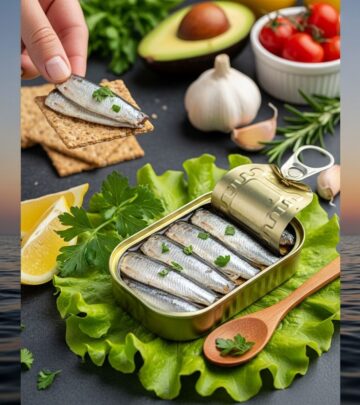14 Effective Home Remedies to Treat Burns Naturally
Household staples can soothe burning pain and support skin recovery after minor burns.

If you have ever suffered from a minor burn at home, you know the discomfort, stinging pain, and slow healing that can follow. Fortunately, with the right knowledge, you can use simple ingredients and techniques to ease the pain, prevent infection, and help your skin recover quickly from first-degree and some mild second-degree burns. This comprehensive guide covers 14 natural home remedies for burns, alongside crucial aftercare tips and frequently asked questions.
Key Takeaways
- First aid is critical: run cool water on minor burns immediately—never use ice or freezing water.
- Natural ingredients like aloe vera gel, raw honey, coconut oil, and milk packs can soothe pain and speed up healing.
- Avoid home remedies that may worsen burns, such as butter or toothpaste (except specific use explained below).
- If a burn is severe, covers a large area, is on the face/genitals/hands/feet, or shows signs of infection, seek immediate medical attention.
Understanding Different Types of Burns
Burns are classified based on their depth and severity:
- First-degree burns: Affect only the outer skin layer (epidermis). Causes redness and pain but no blistering. Often heal within a week with proper home care.
- Second-degree burns: Reach deeper layers (dermis), causing blisters, swelling, and more intense pain. Minor ones may be treated at home, but medical guidance is often needed.
- Third- and fourth-degree burns: Damage all skin layers, underlying tissue, or bone. Immediate emergency care is required; do not attempt home treatment.
This article focuses on mild first- and minor second-degree burns that can be managed at home. When in doubt, consult a healthcare professional.
Immediate First Aid for Minor Burns
Follow these essential steps as soon as the burn occurs:
- Cool the burn: Hold the burned area under cool (not cold) running water for 10-20 minutes.
- Pat dry: Gently dab with a clean towel. Do not rub.
- Protect: Loosely cover with a sterile, non-adhesive bandage if needed.
- Do not pop blisters: Let them heal naturally to reduce the risk of infection.
14 Proven Home Remedies for Burns
1. Cool Water
Why it works: Rapidly cooling the skin halts the burning process and reduces tissue damage. Running cool water (never ice water) is the safest, simplest remedy for instant relief.
How to use: Keep the burn under cool, gentle water for 10–20 minutes immediately, then proceed to other remedies.
2. Cool Compress
Why it works: If running water is not available, a clean dampened washcloth or a cool compress can reduce swelling and pain.
How to use: Apply the cool, clean compress gently for 10–15 minutes. Do not apply ice directly to the skin.
3. Yellow Mustard
Why it works: Mustard seeds are rich in allyl isothiocyanate, a natural counter-irritant that increases blood flow and may reduce pain and inflammation.
How to use:
- Mix 1 tablespoon yellow mustard with 1/2 tablespoon water to form a paste.
- Spread gently over the burn. Leave for up to 15 minutes, then rinse with cool water.
Repeat three times daily as needed.
4. Aloe Vera
Why it works: Aloe vera has well-documented anti-inflammatory, antioxidant, and antibacterial properties. It soothes the skin, reduces pain, and helps prevent infection and scarring.
How to use:
- Apply a thin, even layer of pure aloe vera gel to the cleaned burn.
- Repeat 2–3 times daily until healed.
- If using store-bought gel, choose one without alcohol or fragrance.
5. Honey
Why it works: Raw honey acts as a natural antiseptic and anti-inflammatory agent. It helps inhibit bacteria, soothes tissue, and accelerates healing time.
How to use:
- Gently apply a thin layer of raw, medical-grade honey to the burn.
- Cover loosely with sterile gauze.
- Change the dressing 2–3 times a day.
6. Toothpaste (Non-Gel, White)
Note: Toothpaste is not recommended by most medical professionals due to possible irritation, but anecdotal evidence suggests some people find pain relief when using simple, non-gel, white toothpaste on mild burns. Only use this if other remedies are not available, and never on open wounds or blisters.
How to use: Dab a small amount on the affected, cleaned area; rinse after a few minutes.
7. Tea Bags
Why it works: Black tea contains tannic acid, which draws heat from the burn and soothes inflammation.
How to use:
- Soak 2–3 black tea bags in cool water.
- Gently press the wet bags onto the burn for 10–15 minutes.
8. Baking Soda
Why it works: Baking soda has antiseptic properties and helps restore skin’s natural pH balance, reducing pain and infection risk.
How to use:
- Mix 1 teaspoon baking soda with enough water to form a paste.
- Apply directly to the burn, leave for 10–15 minutes, then gently rinse.
- Use 2–3 times daily.
9. Coconut Oil
Why it works: Rich in fatty acids, antioxidants, and vitamin E, coconut oil reduces inflammation, promotes skin cell regeneration, and helps prevent scarring.
How to use:
- Apply 1–2 teaspoons virgin coconut oil gently over the affected area.
- Leave to absorb naturally; repeat 3 times daily.
10. Vitamin E Oil
Why it works: Vitamin E supports healing by neutralizing free radicals and repairing skin tissue.
How to use: Break open a vitamin E capsule and apply the oil to the cooled burn. Massage gently; reapply twice daily.
11. Milk
Why it works: The proteins and fats in milk create a soothing effect and help reduce discomfort.
How to use:
- Immerse the burned area in cold milk for about 15 minutes.
- Alternatively, mix a little cornflour with milk and apply as a paste.
12. Vinegar
Why it works: White vinegar (diluted in water) is antiseptic and astringent, which can help prevent infection and ease pain.
How to use: Mix equal parts water and vinegar. Soak a cotton pad in the solution and dab gently on the burn.
13. Oats
Why it works: Oats contain polyphenols and have anti-inflammatory, soothing properties. Useful for burns that cover a larger skin area.
How to use: Add a handful of uncooked oats to a bowl of cool water. Soak the affected area for 15–20 minutes. Pat dry softly.
14. Salt Solution
Why it works: A saline solution can cleanse minor burns, helping to prevent infection. Note: can sting, so use only on superficial wounds.
How to use: Dissolve 1/2 teaspoon salt in a cup of lukewarm water. Use as a gentle wash over the burn.
Bonus: Essential Oils for Burns
Popular essential oils that may help with minor burns include:
- Lavender oil: Boosts circulation and has antiseptic, analgesic effects.
- Tea tree oil: Potent antibacterial and anti-inflammatory; should be diluted before use.
To use, blend 1-2 drops with a carrier oil (such as coconut) and gently apply to the cooled and cleaned burn.
What Not To Do for Burns
- Do not use ice, butter, or greasy ointments (except specific cases with coconut oil or vitamin E as described above).
- Do not pop blisters, as this increases infection risk.
- Do not use cotton wool or adhesive bandages directly on the wound.
When to Seek Medical Attention
- If the burn is larger than 3 inches, deep, or located on the face, hands, feet, groin, or over a major joint.
- If signs of infection develop (pus, fever, foul smell, increased redness).
- If a child, elderly person, or immunocompromised individual is burned.
Aftercare Tips for Minor Burns
- Keep the area clean and dry between treatments.
- Protect from friction, sun exposure, and potential irritants.
- Avoid tight or synthetic clothing over healing burns.
Table: Quick Reference – Home Remedies for Minor Burns
| Remedy | Core Benefit | Best Use For |
|---|---|---|
| Cool Water | Stops burning and relieves pain | All minor burns (first step) |
| Aloe Vera | Soothes, heals, prevents scarring | Reddened, painful skin |
| Honey | Antiseptic, accelerates healing | Clean minor burns |
| Yellow Mustard | Reduces pain, increases blood flow | Red, stinging burns |
| Coconut Oil | Moisturizes, regenerates skin | Post-burn hydration |
| Baking Soda | Keeps infection at bay, restores pH | Mild, closed burns |
| Milk | Soothes and cools | Immediate comfort |
| Vinegar | Antibacterial, reduces pain | Rinsing and cleaning |
| Oats | Reduces itching and irritation | Wider skin areas |
| Tea Bags | Absorbs heat, soothes | First aid, ongoing relief |
Frequently Asked Questions (FAQs)
What are the main causes of minor burns at home?
Common causes include contact with hot surfaces (pans, ovens, irons), steam, scalding liquids, sun exposure, and certain chemicals.
What home remedy provides the fastest pain relief?
Running cool water on the burn offers the quickest, most effective relief. Aloe vera gel or honey applied after cooling can maintain comfort.
Is it safe to use toothpaste on burns?
Most medical experts advise against using toothpaste due to added chemicals and abrasion. If used, only apply simple white, non-gel toothpaste and rinse off after a few minutes. Avoid if the skin is broken.
How long does it take for minor burns to heal?
First-degree burns usually heal within 7–10 days. Minor second-degree burns take up to three weeks. Keep the area clean and protected during healing.
What signs indicate a burn is not minor?
If you notice deep wounds, extensive blistering, charring, white or leathery skin, or burns on sensitive body areas, seek medical attention immediately.
Can I use oil (olive, coconut, etc.) immediately after a burn?
Only apply oils after the initial heat has dissipated with cool water and the burn has stabilized. Never apply hot oil, butter, or greasy substances to a fresh burn.
References & Further Reading
- American Burn Association guidelines
- Healthline: “What Home Remedies Can Help Treat Minor Burns?”
- SingleCare: “7 home remedies for burns”
- Peer-reviewed clinical studies on treatments for minor burns
References
- https://www.singlecare.com/blog/home-remedies-for-burns/
- https://www.stylecraze.com/articles/home-remedies-to-treat-burns/
- https://www.healthline.com/health/home-remedies-for-burns
- https://www.1mg.com/articles/6-natural-remedies-minor-skin-burns/
- https://www.stylecraze.com/articles/chemical-burn/
- https://www.businessinsider.com/guides/health/treatments/how-to-treat-burns-at-home
- https://www.medicalnewstoday.com/articles/319768
Read full bio of medha deb









